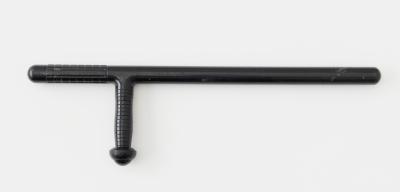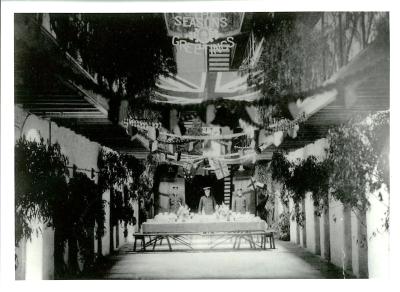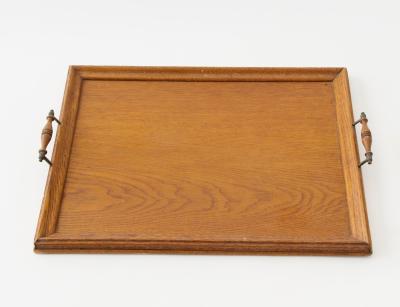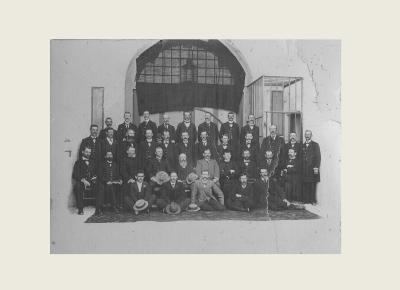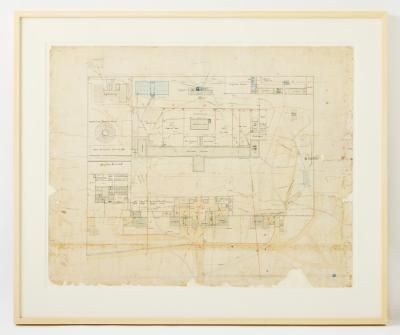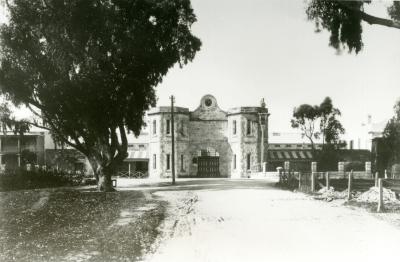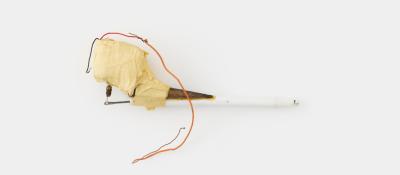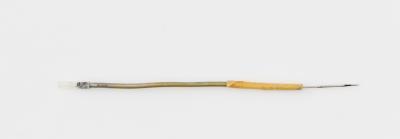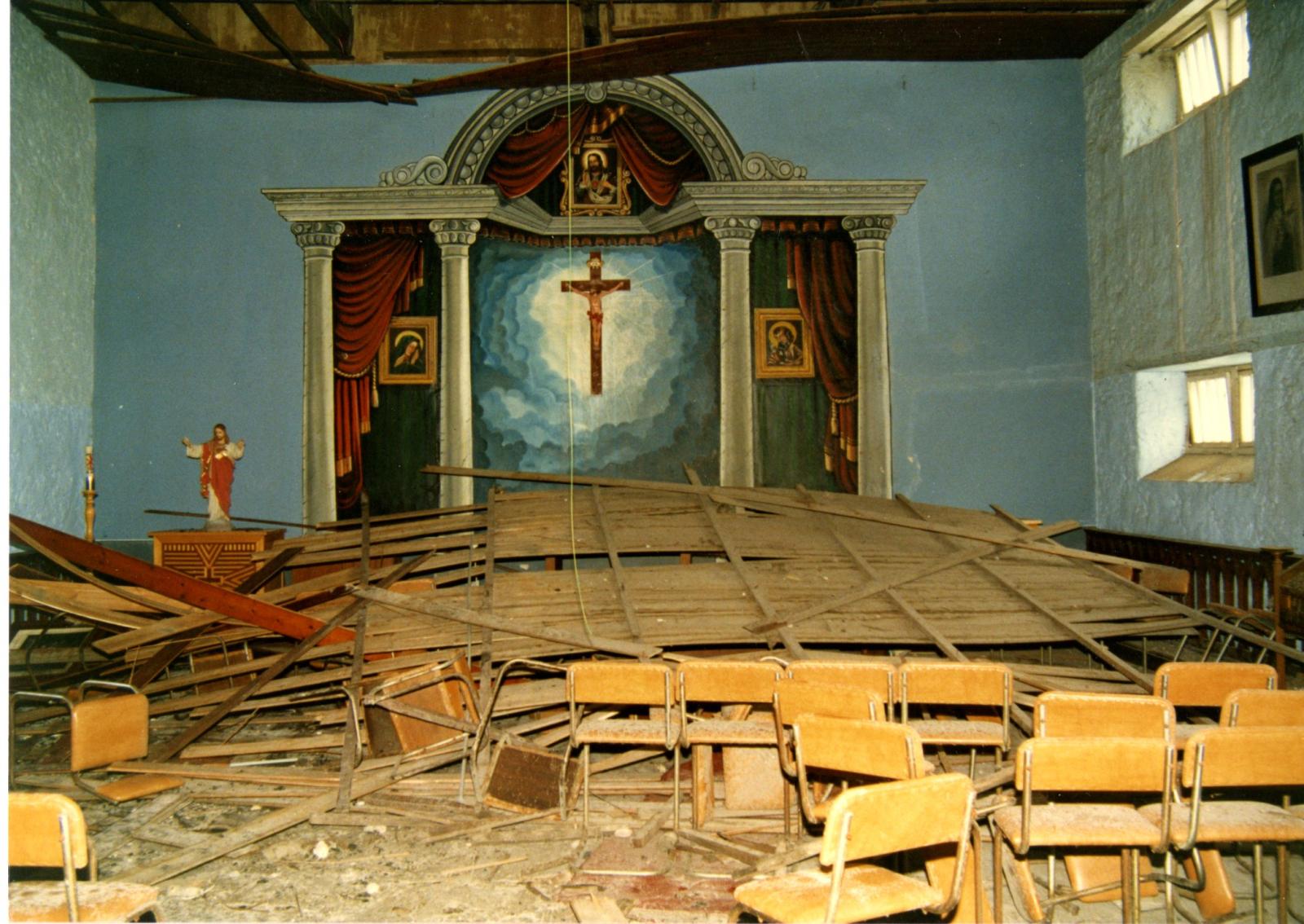PHOTOGRAPH OF CATHOLIC CHAPEL AFTER 1988 RIOT
1988Landscape, colour photograph inside Catholic Chapel, showing damage as a result of the 1988 riot. Image of large room with pale blue walls and two small windows on the right side. The back wall of the room has a large painted fresco with clouds in the centre with a large Christian cross. In the foreground of the image are some upright chairs. The centre of the image is dominated by a large pile of wood panelling which has fallen from the ceiling above.
Unknown provenance; however this image was likely taken by a staff member from the Department of Corrective Services shortly after the 1988 riot, and later donated to the Prison.
Details
Details
Initially there was no provision for a Catholic Chapel within Fremantle Prison, as the majority of the colony's population was Anglican or Protestant. In 1857, a request was put to Henry Labouchere, the Secretary of State for the Colonies in London, when the Catholic community requested the building of a separate chapel at the Convict Establishment. Labouchere replied, “I can find no precedent in any part of the Queen's dominions for undertaking to supply prisons with separate chapels for those belonging to different religious persuasions - I think, therefore, that they must continue to be accommodated, as hitherto, with a separate apartment for the present purpose.” Despite this initial rejection, continued pressure from both catholic prisoners and colonists resulted in the upper floor of the northern Association Ward in the Main Cell Block being converted into a Catholic Chapel in 1861. Further improvements were made in 1862 when a doorway was created, allowing access directly from the Main Cell Block into the Catholic Chapel. Previously the Chapel could only be accessed by using a circular staircase located on the outside of the building.
On the 4th of January 1988 inmates at Fremantle Prison began to riot. At lock up time, prisoners in 3 Division yard stormed into the Main Cell Bock and attacked the Officers. Using anything that came to hand, including boiling water, five Prison Officers were taken hostage. Prisoners then lit spot fires inside some of the cells and on the landings, which were encouraged to burn with the use of newspapers, magazines and fuel from the Prison’s lawnmower, which the prisoners had secretly been stockpiling in preparation for the riot. The top floor cells were opened, and wooden tables and stools were smashed and set alight. Mattresses and other combustibles were added until the flames reached the 130-year-old jarrah roof of the Main Cell Block, which soon caught alight. The fire in the roof spread and caused the collapse of the ceiling above the Catholic Chapel. The riot lasted through the night and into the next day before the Prison was bought back under control. The repair work carried out on the Main Cell Block to fix the damage cost $1.8 million. The riot highlighted the poor conditions prisoners were subjected too, and the Prison was eventually closed in late 1991.
Open in Google Maps
Nearest geotagged records:
- AD REM PRISON NEWSLETTER (0km away)
- CONCERT PROGRAMME (0km away)
- IMAGE OF CHRISTMAS FESTIVITIES (0km away)
- ENTRANCE TO FREMANTLE PRISON (0km away)
- IMAGE OF SALLY PORT (0km away)
- IMAGE OF THE MAIN CELL BLOCK (0km away)
- GATEHOUSE/RECEPTION (0km away)
- IMAGE OF BAKING BREAD (0km away)
- PHOTOGRAPH OF PRISON LIBRARY (0km away)
- PLAN OF PUMPING STATION DRIVES AND SHAFTS (0km away)
Nearby places: View all geotagged records »

